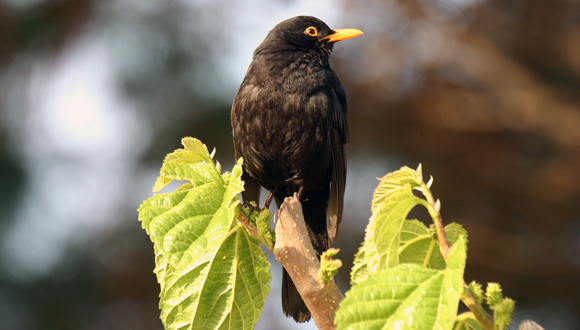Animals have adapted to city life by adjusting their behavior
According to experts at the CREAF, this capability assures success in the city and the possibility to become "urbanite" animals. A comprehensive review of published studies concludes that in urban environments, species often change their eating habits, lose their fear of humans and modify their way of communicating.

Of all human-induced environmental changes, urbanization is one of the most rapid and drastic. While the majority of organisms do not tolerate urbanization well, a few are there better than ever. Why are there such important differences in the animals’ tolerance to environmental change? A review article published in the journal Animal Behaviour shows that the animals that have been successful in cities are those that are able to adjust their behavior to the challenges involved in living in cities, such as find new sources of food, avoid inconvenience caused by humans or communicate in noisy environments.
Urbanite animals know how look for new sources of food, avoid the inconvenience of humans and communicate despite the noise.
According To Daniel Sol, Oriol Lapiedra and Cesar Gonzalez, all researchers at the CREAF, the ability to adjust the behaviour changes associated with urbanization is a widespread strategy that can determine the survival of a species in the city. In many cases, these adjustments reflect a flexibility of behavior because some of these changes can occur rapidly and often involve learning. In other cases, the animalbehavioral differences observed between urban and non-urban areas can reflect evolutionary changes or, alternatively, that only individuals with appropriate behaviors have been able to establish themselves in the city. Regardless of the origin of the behavioral differences, the review points out that these behavioral changes are essential for the survival of individuals, especially in the establishment phase in the city.
Different solutions in order to adapt to the life in the city
The most common behavioral changes, according to the study, are related to food, the ability to communicate and their relationship with humans. In the first case, a large number of studies show that "urbanized" animals change their eating habits, incorporating in their diet foods associated with human activity (fruits of ornamental trees, garbage, etc). This makes available too much food to the extent that they become sedentary species and increase in density and become pests.
With regard to human presence, although they have been observed, animals such as the coyote and black bear-they change their schedule of activity to avoid contact with humans; many others have lost their fear of humans. This is the case with doves, which depend heavily on the food that they are given voluntarily from people and who not only don't fear, but even learn to recognize those people who give them food, or of a blackbird, which has shortened its flight distance in order to carry out activities without being disturbed by people.
The noise of cities also has caused "urbanized" animals to modify the way they communicate. In the cities, for example, some birds increase the frequency of their singing and duration in order to avoid that the sound interferes with the city noise, which is usually at a low-frequency.
Researchers also highlight the new skills of some animals to take advantage of the contamination level of the cities. The best examples are from bats and some birds that have specialized to be able eat the insects that accumulate under lights at night. In other cases it has been observed that other birds sing at odd hours because of the artificial lights.
These results have important implications for conservation, since the urbanization is one of the main causes of biodiversity loss." Given that it is expected that the process of urbanization will continue threatening biological diversity in the near future, there is a certain urgency to improve our understanding of the mechanisms of behavior that help animals to cope with these environmental alterations," alerts Daniel Sol, researcher at the CSIC and the CREAF.
Article
D Sol, O Lapiedra, C Gonzalez-Lagos Behavioural adjustments for a life in the city. Animal Behaviour 85 (2013) 1101–1112







